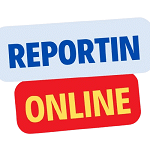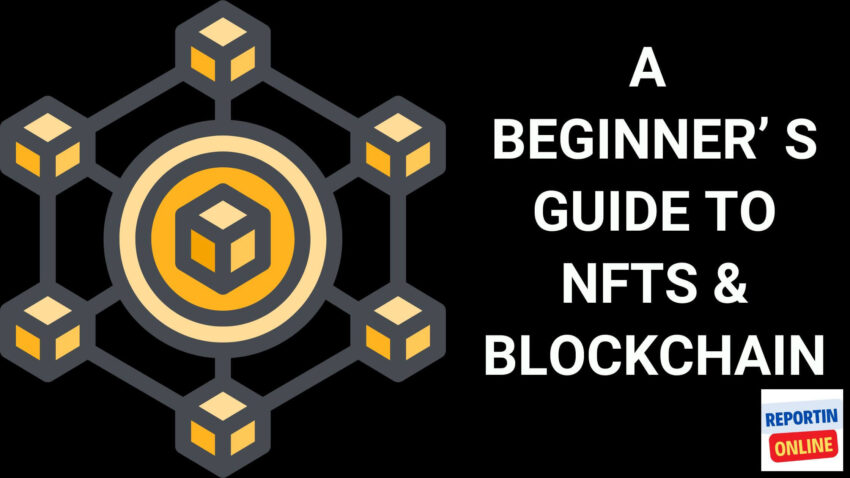Introduction
Welcome to the world of blockchain and non-fungible tokens (NFTs)! This guide is designed for anyone new to these technologies, offering clear explanations, step-by-step breakdowns, and practical advice.
By the end, you’ll understand what blockchain is, how NFTs work, and how you can get started with these revolutionary digital tools.
What is Blockchain?
Blockchain is a revolutionary technology that allows information to be recorded, stored, and verified in a secure, transparent, and decentralized way.
At its core, blockchain is a type of database; but it’s much more than just a spreadsheet or a traditional ledger24.
Key Features of Blockchain
- Decentralization: Unlike traditional databases controlled by a single entity, blockchain is maintained by a network of computers (nodes) spread across the globe. No single person or organization has full control 4.
- Transparency: Every participant in the network can see the transactions recorded on the blockchain. This openness helps build trust among users 4.
- Immutability: Once data is recorded on the blockchain, it cannot be altered or deleted. This makes blockchain an excellent tool for recording important information 24.
- Security: Blockchain uses advanced cryptography to secure data. Each block contains a unique code (hash) that links it to the previous block, creating a chain that is extremely difficult to tamper with24.
How Does Blockchain Work?
Let’s break down how blockchain operates step by step:
- Recording a Transaction:
When someone wants to send or receive digital assets (like cryptocurrency), a transaction is created. This transaction includes details like who is involved, what is being exchanged, when it happened, and other relevant information2. - Gaining Consensus:
The transaction is broadcast to the network. Most participants (nodes) must agree that the transaction is valid. Different blockchains use different methods for this, but the goal is always to ensure that everyone is in agreement24. - Creating a Block:
Once the transaction is validated, it is grouped with other transactions into a block. Each block contains a unique code (hash) that connects it to the previous block, forming a chain24. - Adding the Block to the Chain:
The new block is added to the blockchain, and the updated ledger is shared with all participants. This ensures that everyone has the latest version of the blockchain24. - Immutability and Security:
Because each block is linked to the one before it, tampering with any part of the chain would require changing every subsequent block—a near-impossible task thanks to the computational power required24.
Why is Blockchain Important?
Blockchain technology is transforming industries by enabling secure, transparent, and efficient transactions.
It is used for cryptocurrencies, supply chain management, voting systems, and much more. Its ability to create trust without intermediaries makes it a powerful tool for the digital age 24.
What are NFTs?
NFTs, or non-fungible tokens, are unique digital assets that represent ownership of a specific item or piece of content.
Unlike cryptocurrencies such as Bitcoin or Ethereum, which are fungible (meaning each unit is interchangeable), NFTs are non-fungible—each one is unique and cannot be replaced by another 135.
How Do NFTs Work?
NFTs are created, or “minted,” on a blockchain. Here’s how the process works:
- Creating the Digital Asset:
The creator decides what the NFT will represent—this could be digital art, music, videos, virtual real estate, or even physical items. - Minting the NFT:
The digital asset is uploaded to a blockchain platform, where it is turned into an NFT. This process involves creating a unique token with its own identifier and metadata 135. - Recording Ownership:
The NFT is assigned to a specific blockchain address, and the ownership is recorded on the blockchain. This makes it easy to verify who owns the NFT at any time 135. - Buying and Selling:
NFTs can be bought, sold, or traded on NFT marketplaces. Ownership is transferred using blockchain transactions, ensuring that the process is secure and transparent 137.
Why Are NFTs Unique?
NFTs are unique because each one has its own identifier and cannot be replicated.
This makes them ideal for representing ownership of digital art, collectibles, and other unique items. Even if thousands of NFTs are created for the same digital file, each one will have a unique identifier and owner135.
What Can NFTs Be Used For?
NFTs have a wide range of applications, including:
- Digital Art: Artists can sell their work as NFTs, ensuring authenticity and provenance.
- Collectibles: Digital trading cards, virtual pets, and other collectibles can be bought and sold as NFTs.
- Virtual Real Estate: Virtual worlds like Decentraland allow users to buy, sell, and develop virtual land as NFTs.
- Music and Videos: Musicians and filmmakers can sell their work as NFTs, giving fans unique access or ownership.
- Gaming: In-game items, characters, and skins can be tokenized as NFTs, allowing players to own and trade them outside the game 137.
How to Create an NFT
Creating an NFT is easier than you might think. Here’s a step-by-step guide:
- Choose Your Digital Asset:
Decide what you want to turn into an NFT—art, music, video, or something else. - Select a Blockchain Platform:
Popular choices include Ethereum, Solana, and others. Each platform has its own requirements and fees 7. - Set Up a Digital Wallet:
You’ll need a wallet that supports the blockchain you’re using. Examples include MetaMask and Trust Wallet 7. - Upload Your Asset:
Use an NFT marketplace or platform to upload your digital file and fill in the details (title, description, etc.). - Mint the NFT:
The platform will guide you through the minting process, which involves creating the NFT on the blockchain. - Set a Price and List for Sale:
Decide whether to sell your NFT at a fixed price, through an auction, or as part of a collection 7.
How to Buy an NFT
If you want to buy an NFT, follow these steps:
- Choose a Marketplace:
Popular NFT marketplaces include OpenSea, Rarible, and SuperRare7. - Set Up a Wallet:
You’ll need a digital wallet compatible with the marketplace and blockchain. - Fund Your Wallet:
Add cryptocurrency (like Ethereum) to your wallet to use for purchases. - Browse and Select an NFT:
Look for NFTs that interest you and check their details, including price and ownership history. - Complete the Purchase:
Follow the marketplace’s instructions to buy the NFT. The transaction will be recorded on the blockchain, and the NFT will be transferred to your wallet 7.
Benefits of NFTs
NFTs offer several advantages:
- Proof of Ownership: NFTs provide a verifiable record of ownership for digital assets135.
- Authenticity and Provenance: It’s easy to trace the history of an NFT, helping to prevent fraud135.
- New Revenue Streams: Creators can monetize their work in new ways, such as through royalties on secondary sales137.
- Interoperability: NFTs can be used across different platforms and applications, making them versatile137.
Challenges and Risks
While NFTs and blockchain offer many benefits, there are also challenges and risks to be aware of:
- Volatility: The value of NFTs can fluctuate dramatically, and the market is still relatively young and unpredictable6.
- Environmental Impact: Some blockchains use a lot of energy, raising concerns about their environmental footprint.
- Scams and Fraud: As with any new technology, there are risks of scams, fake NFTs, and phishing attacks. Always do your research and use trusted platforms6.
- Technical Complexity: Creating and managing NFTs can be technically challenging for beginners. Don’t hesitate to seek help or use user-friendly platforms7.
The Future of NFTs and Blockchain
NFTs and blockchain technology are still evolving, but their potential is enormous. Here are some trends to watch:
- Mainstream Adoption: More artists, musicians, and brands are embracing NFTs, bringing them into the mainstream.
- New Use Cases: NFTs are being used for ticketing, identity verification, and even real estate.
- Improved Technology: New blockchains and protocols are being developed to address issues like scalability and energy consumption.
- Community and Collaboration: Decentralized communities are playing a bigger role in shaping the future of NFTs and blockchain 137.
Getting Started: Practical Tips
If you’re ready to dive in, here are some practical tips:
- Start Small: Begin with a small investment or a simple NFT project to get comfortable with the technology.
- Do Your Research: Learn about different blockchains, marketplaces, and wallets before making any decisions.
- Stay Secure: Use strong passwords, enable two-factor authentication, and keep your private keys safe.
- Join Communities: Engage with NFT and blockchain communities on social media, forums, and Discord to learn from others and stay updated.
- Have Fun: Experiment, create, and explore the possibilities of NFTs and blockchain!
Conclusion
NFTs and blockchain are transforming how we think about ownership, creativity, and value in the digital age. By understanding the basics, you can participate in this exciting new world—whether as a creator, collector, or enthusiast. Remember to stay informed, stay secure, and enjoy the journey!
This guide covers the essentials and provides a solid foundation for anyone interested in NFTs and blockchain. If you’re ready to learn more, explore the resources and communities available online, and start your own NFT journey today! 137
Citations:
- https://www.blockpit.io/en-gb/blog/nft-beginner-guide
- https://aws.amazon.com/what-is/blockchain/
- https://www.investopedia.com/non-fungible-tokens-nft-5115211
- https://builtin.com/blockchain
- https://www.simplilearn.com/tutorials/blockchain-tutorial/what-is-nft
- https://www.jetlearn.com/blog/nfts-for-dummies-guide
- https://www.blockchain-council.org/guide/nft-guide-everything-you-need-to-know/
- https://www.blockchain.com/learning-portal/lessons/nfts
- https://upplabs.com/nfts-101-a-useful-beginners-guide/
- https://about.fb.com/news/2022/06/what-are-nfts-beginners-guide-by-meta/

